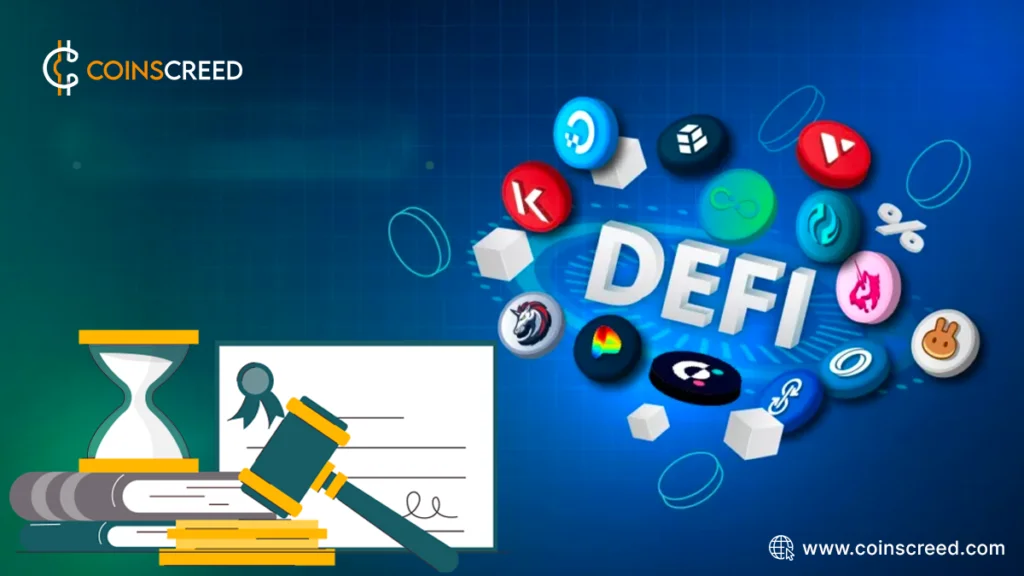This article will discuss The legal and regulatory issues surrounding synthetic assets in DeFi and possible solutions.

Synthetic assets have emerged as a popular concept within decentralized finance (DeFi). These digital representations or derivatives of real-world assets allow users to gain exposure to various financial instruments in a decentralized manner. However, the rising popularity of synthetic assets in DeFi also brings to light significant legal and regulatory implications they must address.
Defining Synthetic Assets and DeFi
Synthetic assets in the context of DeFi refer to digital assets designed to mimic the value and characteristics of real-world assets, such as stocks, commodities, or fiat currencies. These digital assets are typically created through smart contracts on blockchain platforms, allowing users to gain exposure to them without actually owning them.
Decentralized finance, or DeFi, refers to a system of financial applications and platforms built on blockchain technology. These platforms aim to provide open and permissionless access to financial services, bypassing traditional intermediaries like banks. DeFi enables users to engage in lending, borrowing, trading, and investing without relying on centralized authorities.
How are Synthetic Assets Transforming the DeFi Landscape
Synthetic assets are revolutionizing the decentralized finance (DeFi) landscape by allowing users to create and trade tokenized versions of real-world assets, including stocks, commodities, or other cryptocurrencies. Here’s how they are transforming DeFi:
- Access to Traditional Assets
- 24/7 Trading and Liquidity
- Fractional Ownership
- Risk Management
- Innovation and Flexibility
Access to Traditional Assets
Synthetic assets enable users to access traditional assets that were previously inaccessible on blockchain platforms. By tokenizing real-world assets, individuals have access to a diverse array of assets without the need for intermediaries or traditional financial institutions.
24/7 Trading and Liquidity
Unlike traditional financial markets with limited trading hours, synthetic assets operate on open blockchain networks 24/7, which provides users continuous access to trading opportunities and increased liquidity for synthetic assets.
Fractional Ownership
Synthetic assets allow for fractional ownership, meaning users can own a fraction of an asset rather than acquire the whole asset, which opens up investment possibilities to a broader range of participants and lowers the barrier to entry.
Risk Management
Synthetic assets provide users with new tools for managing risk. They can create and trade synthetic derivatives, such as futures and options, allowing for hedging strategies and exposure to price movements without physically owning the underlying assets.
Innovation and Flexibility
Synthetic assets promote innovation by allowing developers to create new financial products and experiment with various asset combinations. This flexibility encourages the development of unique DeFi solutions and expands the range of possibilities within the ecosystem.
Legal and Regulatory Implications of Synthetic Assets in DeFi
Synthetic assets, although revolutionary, pose several legal and regulatory challenges that demand thoughtful attention. Market participants, investors, policymakers, and regulators need to have a comprehensive understanding of these issues. Let’s examine some of them:
- Undefined Regulatory Framework
- Smart Contract Risks
- Market Manipulation and Insider Trading
- Anti-Money Laundering and Know Your Customer
- Consumer Protection
Undefined Regulatory Framework
One of the foremost challenges associated with synthetic assets in DeFi is the need for a well-defined regulatory framework. Traditional financial systems are subject to strict regulatory oversight, ensuring investor protection, market integrity, and adherence to anti-money laundering (AML) and know-your-customer (KYC) regulations. However, DeFi operates in a borderless and permissionless environment, making it difficult for regulators to impose and enforce guidelines.
Smart Contract Risks
Smart contracts, which form the foundation of DeFi platforms, are self-executing agreements with the terms of the agreement directly written into code. While they provide automation and transparency, they are not immune to bugs or vulnerabilities. A flaw in a smart contract could lead to financial losses or other malicious activities, raising concerns about consumer protection and legal recourse.
Market Manipulation and Insider Trading
Synthetic assets in DeFi can be susceptible to market manipulation and insider trading. Due to the decentralized nature of these platforms, it might be challenging to detect and prevent such activities. Users may exploit price discrepancies without proper regulations, leading to unfair market practices and potential harm to unsuspecting participants.
Anti-Money Laundering and Know Your Customer
AML and KYC regulations are integral to the traditional financial system as essential safeguards against money laundering and illicit activities. However, implementing these regulations in the decentralized realm of synthetic assets poses significant challenges. The pseudonymous nature of blockchain transactions makes identifying users’ true identities and intentions difficult, potentially facilitating criminal activities.
Consumer Protection
In traditional finance, consumer protection laws help safeguard investors’ interests and ensure fair treatment. In DeFi, where transactions are executed on smart contracts, the absence of intermediaries may result in a lack of legal protections and avenues for dispute resolution. It raises concerns about the potential exploitation or fraudulent practices that users may encounter without recourse.
Addressing Legal and Regulatory Implications of Synthetic Assets in DeFi
A collaborative and multi-pronged approach is necessary to address the legal and regulatory implications associated with synthetic assets in DeFi. Here are some potential solutions:
Regulatory Collaboration
Regulators from different jurisdictions must work together to establish a global regulatory framework tailored explicitly to synthetic assets in DeFi. Collaboration can minimize regulatory arbitrage and ensure consistent standards across borders.
Code Audits and Security Standards
Comprehensive code audits and adherence to rigorous security standards for smart contracts can mitigate the risks of vulnerabilities and bugs. Independent third-party audits can instill confidence in users and assure the reliability and security of DeFi platforms.
Market Surveillance Mechanisms
Creating and implementing market surveillance mechanisms can aid in identifying and stopping market manipulation and insider trading. These mechanisms may involve advanced monitoring tools, data analysis, and collaboration with decentralized platform developers to ensure fair and transparent market behavior.
Enhanced KYC and AML Measures
Solutions for addressing AML and KYC regulations in DeFi need to strike a balance between privacy and compliance. They can achieve this by adopting privacy-enhancing technologies, such as zero-knowledge proofs or decentralized identity protocols, which enable users to prove their identities without disclosing personal information.
Insurance and Risk Mitigation
Establishing decentralized insurance mechanisms can protect users in the event of smart contract failures, hacks, or other unforeseen risks. Insurance solutions can enhance consumer protection and provide avenues for compensation in cases of losses due to technical issues or malicious activities.
Conclusion
The emergence of synthetic assets in DeFi presents a range of captivating prospects for decentralized finance, enabling broader accessibility to a diverse array of financial instruments. Nevertheless, it is necessary to consider the legal and regulatory implications of these assets. As the DeFi ecosystem evolves, addressing these challenges will be crucial to ensure investor protection, market integrity, and long-term sustainability.
Collaboration between regulators, industry participants, and technologists will be vital in developing a robust regulatory framework that balances innovation with the necessary safeguards. By collectively addressing the legal and regulatory implications, we can foster the growth of synthetic assets in DeFi while safeguarding the interests of participants and ensuring a more secure and inclusive financial system.
